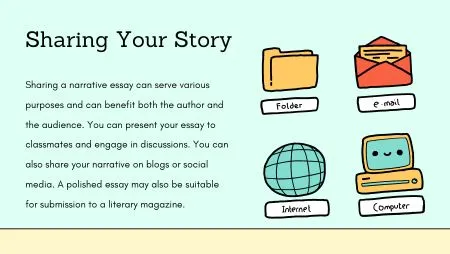While academic writing can occasionally be dry and uninteresting, one particular kind of writing is called a narrative essay. Unlike most other essay types, narrative writing allows students to tell a story. This offers a welcome break from rigid guidelines and allows them to share a personal experience or work of fiction. Here are five valuable suggestions from our knowledgeable assignment helpers to assist you get through the challenges of creating narrative essays. You can fulfill the academic criteria and tell your tale in an appropriate manner by adhering to these principles.
What is a narrative essay?
Before we go over the advice, let us define a narrative essay. Assignment helpers states a narrative essay is writing in which the idea of a story takes center stage. Nonetheless, narrative essays require imagination, characterization, and description, unlike persuasive or argumentative essays, where facts and reasoning are central. They are frequently based on firsthand experiences and are typically offered in chronological order. The story’s purpose is to captivate readers and make them feel a connection to them.
Assignment Helpers Guide to Structuring Your Narrative
The most critical component of any writing, mainly when delivering a powerful message through a narrative, is organization. Our assignment helpers advise you to divide your story into three primary sections: The introduction, the main body, and the conclusion are the three primary sections.
Introduction: This is the section where you should establish your setting and characters, keeping in mind that the conflict is what drives the plot. First and foremost, you should pique the reader’s interest with an attention-grabbing opening line before providing the required context.
Body: As a result, it serves as the backdrop for activities. Include the climax and rising action first, and then the descending action. Don’t Be bold and use descriptive words and adjectives that instantly transport the reader to the situation.
In conclusion, tie up any loose ends and consider the lesson learned from the narrative or argument. A well-written narrative essay should leave the reader with some food for thought.
Use Descriptive Language to Create Vivid Imagery
The way the story is constructed through the senses is equally essential. The assignment helpers further clarify that practicing descriptive adjectives is necessary because it’s a valuable technique for employing words to paint an image. Give further details about what you saw and experienced during the events you describe, including any scents or emotions you experienced. For instance, you could write, “The sky was crying, and its tears were thick droplets of rain which fell with a force that synchronized to the rhythm of the drums as they answered in the room,” instead of, “It was a rainy day.”
This detailed approach makes the reader feel like he or she is living the story as it unfolds.
Develop Compelling Characters
Any story’s core is its cast of characters. Assignment helpers encourage students to develop their characters more complicatedly when teaching them how to build narrative assignments. Give them reasons, shortcomings, strengths, and personal difficulties. Make the story so that every character in your story, whether multiple heroes or just one notable one, should have a unique personality and purpose. Give your characters experiences and issues the viewer can relate to to make them seem natural and understandable.
Use Dialogue to Drive the Story Forward
Because it gives your characters life, language is a crucial component of narrative writing for interpretation. As a result, the well-written dialogue enhances the work’s believability. It facilitates a deeper comprehension of the characters and their interactions—Boise State social media dreams for a fearless, violent, echinacea-filled, happy fall.

Our assignment helpers advise that to ensure your work is done with severe and energetic compliance and curiosity, you should utilize lines that seem realistic to the program and stay on the subject. Each of these conversations is significant, either in terms of advancing the story or strengthening the characters. For instance, when the dispute can aid in building tension or a plot twist, don’t only rely on the straightforward, conversational element of small talk.
Find Your Unique Voice and Perspective
Another benefit that is inherent in a narrative paper is the ability to express oneself in the process of writing. However, in narrative writing, the author is free to write casually compared to when writing structured essays. It is crucial to remain in the present tense and use an active, natural tone, whether using the ”first” person (I) or the ”third” (they). As stated by our assignment helpers, the approach is one of the most crucial aspects that define success or failure in a story. Finally, think about what insight you’d like your readers to gain, what lesson they should learn, or the emotional arc you’d like to take them through.
Gaining proficiency in the type of writing required to construct a narrative essay enhances a student’s overall writing skills. It is important to remember that the reader might find something interesting to read when inventiveness is combined with organization, vivid language, and compelling characters. Remember that the goal of a narrative essay is to arouse the reader’s emotions as much as to instruct them. Contact our assignment helpers if you need a more customized strategy!


